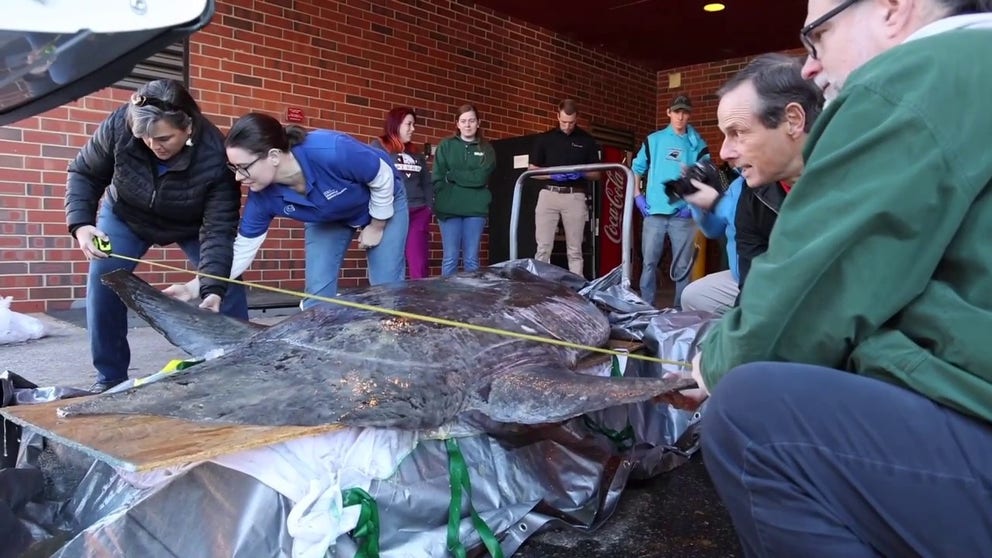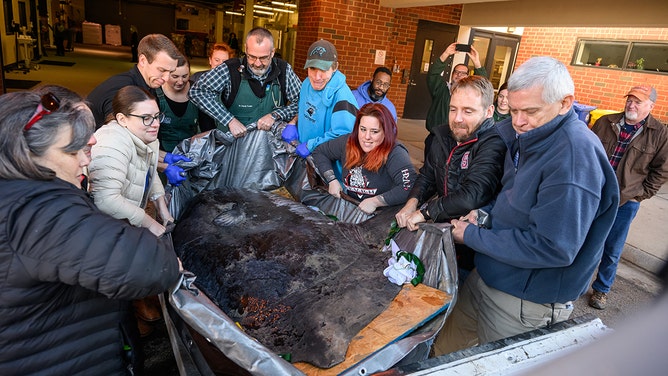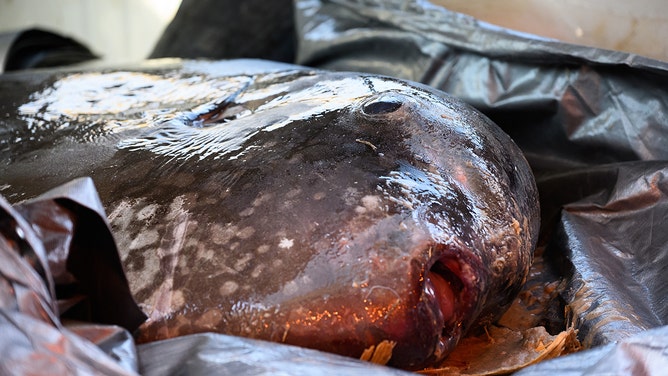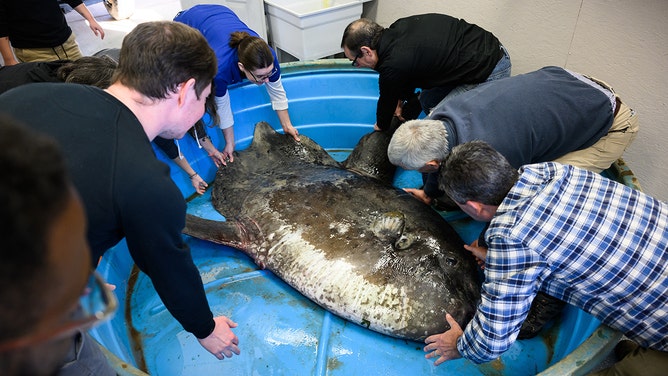450-pound sunfish found washed ashore in North Carolina to be preserved for museum display
The massive sharptail mola sunfish was uncovered at Seaview Pier at North Topsail Beach on Nov. 30 after a local citizen called the North Carolina Division of Marine Fisheries. The mola is just one of five species of sunfish in the world.
Massive sunfish washed ashore in North Carolina
The 450-pound sharptail mola sunfish was uncovered at Seaview Pier at North Topsail Beach on Nov. 30 after a local citizen called the North Carolina Division of Marine Fisheries. The mola is just one of five species of sunfish in the world.
RALEIGH, N.C. – Move over "Trouble," there's a new fish in town.
If you ever get a chance to visit the North Carolina Museum of Natural Sciences, the first thing that might catch your eye is one of the most impressive whale skeleton collections on display in the U.S. Bones from their signature sperm whale named "Trouble" could soon be overshadowed by a massive sunfish that recently washed ashore along the Carolina coastline.
The 450-pound sharptail mola sunfish was uncovered at Seaview Pier at North Topsail Beach on Nov. 30 after a local resident called the North Carolina Division of Marine Fisheries. The mola is just one of five species of sunfish in the world.
It measured over 6 feet 8 inches from fin to fin, according to Lily Hughes, curator of ichthyology at the North Carolina Museum of Natural Sciences and research assistant professor at North Carolina State University. It even took a horse scale at the College of Veterinary Medicine at NC State to weigh the monster.
"Very big," Hughes exclaimed.
PADDLEBOARDERS SPOT MASSIVE SUNFISH BENEATH THEM OFF CALIFORNIA COAST
The museum has curated other parts of molas in their research collection of more than 1.4 million fish specimens, but Hughes said this catch was extra special.
"This one was perfect," she said. "It's intact and in really good shape. You can see the whole fish rather than picked out by birds."
It took a team of volunteers to transport the fish by truck from the local fishing pier to Karen Beasley Sea Turtle Rescue and Rehabilitation Center and then onto the museum's collections facility.
The fish is currently being held in an 8-foot stock tank while researchers go through the preservation process.
"It’s been a challenge," Hughes said. "It definitely takes a village, but with a lot of help and a lot of enthusiasm, we've been able to move it around."
It's surprising to find molas in museum collections, partially because they are so big and a challenge to preserve and store, Hughes adds.
"But this one was in such beautiful condition," she said. "It just provided a really excellent opportunity to preserve and study this fish," Hughes said.
TEXAS TROPHY: MAN HOOKS 300-POUND ALLIGATOR GAR OUTSIDE HOUSTON
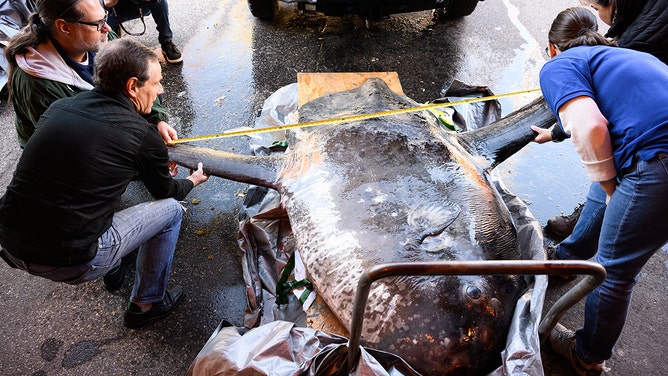
The sharptail mola sunfish measured over 6 feet 8 inches from fin to fin, according to Lily Hughes, curator of ichthyology at the North Carolina Museum of Natural Sciences and research assistant professor at North Carolina State University.
(NC State College of Veterinary Medicine)
As excitement builds from museum patrons to see the fish on display one day, Hughes said it might be some time before a public showcase.
"We're preserving it for research and education for a long time to come," she said. "We're hoping people will be able to visit with it and learn more about it."
Found around the world in tropical and temperate waters, the species is one of the largest bony fishes on Earth and can measure up to 11 feet long. They feed on zooplankton, small fishes and algae.
According to Guinness World Records, the heaviest specimen is a deceased bump-head sunfish found off Faial Island in the Azores, Portugal, on Dec. 9, 2021. It weighed 6,049 pounds and measured 11 feet 9 inches in total length between the fin tips.
The name mola comes from the Latin meaning millstone in relation to this animal's rounded body shape.
